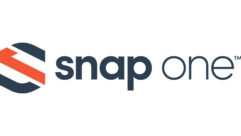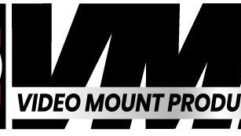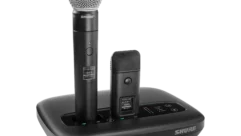Certified peace of mindTo cut through the confusion surrounding myriad ordinances, nothing is more convincing than the UL mark.
Feb 20, 1997 12:00 PM,
By Eduardo BertagniBertagni is manager of research and development at Sound Advance Systems in Sant
Contractors and system integrators face the difficult task of maintaining a safe working and installation environment at all times, but if their equipment has the UL label, they know it is safe.
One of the U.S. leaders in the development of product safety standards, Underwriters Laboratories is a not-for-profit, nongovernmental organization. Developed in an open forum, engaging everyone from manufacturers to consumers, UL standards are compatible with the National Electrical Code (NEC) and other nationally recognized installation, building and safety codes.
Federal regulations and U.S. national safety codes serve as cornerstones for the 40,000 local regulatory jurisdictions, from state to township. At this grassroots level, codes and regulations usually mandate using products, components and materials evaluated by a respected third-party. Among these third-party organizations, UL is the leader.
Founded in 1894 by William Henry Merrill, an electrical inspector, the first UL laboratory was a one-room affair above a Chicago fire station. Outfitted with a bench, table, chairs and $350 worth of electrical measuring devices, the lab issued its first report on March 24, 1894. Over the course of the next century, UL tested more than 16,500 types of industrial and consumer products. Today, the organization employs 4,200 engineers, technicians and other staff. Testing occurs in Northbrook, IL; Melville, NY; Santa Clara, CA; Research Triangle Park, NC; and Camas, WA. UL has testing facilities in Taiwan, Hong Kong and Japan and has almost 200 inspection centers in 63 other countries. Yearly, the organization conducts about 500,000 factory inspections and applies the familiar circular UL Mark of Safety to more than nine billion products worldwide.
Getting certifiedSo how does a product obtain UL certification? Companies from all over the globe offer product samples to UL for evaluation. These products are evaluated specifically for their intended uses according to their ability to comply to all applicable UL standards. Properly documented products passing all of UL’s tests are given a UL file number. At this point, they are officially authorized to wear the appropriate UL mark and are listed under a specific category.
UL maintains categories for both “listed” and “recognized” products. Listed products are suitable for across-the-board use as field-installed components; recognized products, whether because of incomplete construction features or restrictions in performance capabilities, are suitable only for factory installations or other applications as determined by UL.
The manufacturing of UL-approved products is audited via UL’s Follow-Up Services (FUS) department. As a counterchecking measure insuring that all products bearing the UL mark continue to meet safety requirements, field representatives from FUS make frequent, unannounced visits to production facilities worldwide. Onsite, they check production controls, bear witness to testing procedures and gather additional product samples for further testing back at UL. An integral and vital part of UL’s product safety certification program, the work of FUS is one of the world’s largest undertakings of its kind.
Each UL safety standard is revised on an ongoing basis as both technology and safety concerns evolve. New standards are developed as new products are introduced. UL has published more than 640 safety standards, of which about 70% have been designated by the American National Standards Institute (ANSI) as bona fide American National Standards.
Outside of the United States, UL assists manufacturers entering foreign markets by helping them comply with international safety requirements and apply for export approvals. Through cooperative agreements made with various international organizations, UL also evaluates products according to many other countries’ standards and facilitates acceptance by multiple certification organizations with a single product submittal.
Harmonization efforts with the Canadian Standards Association (CSA) and International Electrotechnical Commission (IEC) have been underway at UL for a number of years. Presently, UL is the first safety organization in the United States to be granted Certification Organization (CO) and Testing Organization (TO) accreditations in Canada by the Standards Council of Canada.
Applicable to every UL facility managing both certification and testing, UL’s CO accreditation allows it to evaluate products for the Canadian marketplace according to Canadian standards, and it codes and labels qualifying products with the UL mark for Canada. UL is officially accepted in all Canadian provinces and territories. Compliance with IEC standards is also used as the basis to issue Canadian certifications.
Manufacturers worldwide can also rely upon UL to help them obtain certification in Mexico with the Asociacion Nacional de Normalizacion y Certifi-cacion del Sector Electrico, which is a private-sector standards and product certification organization that is government accredited.
Why you should careUL standards and listings really mean quite a bit to the systems integrator. Probably the largest area in which UL makes its presence felt within ourindustry concerns loudspeaker applications, more specifically, loudspeakers for fire protective and generalsignaling systems.
A huge market segment, these signaling systems are in scores of applications in schools and hospitals and office buildings and apartment complexes. To cut through the confusion surrounding the myriad local ordinances governing the safe and effective use of loudspeakers in these applications, nothing is more convincing than the UL mark.
UL 1480 is one of the standards regulating loudspeakers used within fire protective signaling systems. The basic requirements for products covered under this standard are based upon engineering principles, research, testing and field experiences, and an appreciation of the problems of manufacture, installation and use, learned via input from manufacturers, users, inspection authorities and others.
The standard covers electrically and electronically operated loudspeakers for speech communication and distinctive sounds in conjunction with indoor and outdoor fire protective signaling systems, in accordance with National Fire Alarm Code NFPA 72. Loudspeakers listed under this standard are to be used in either fire protective signaling systems or in general, nonfire alarm signaling service.
Electrical, acoustical and mechanical evaluations are performed to determine compliance with UL 1480 and include tests on frequency response, audibility, endurance, corrosion, burnout and mechanical strength during jarring, impact and vibration. For products to pass the UL 1480 testing procedure, all materials and components used in the manufacture of the product must also be acceptable per the standard.
As part of the natural course of events at UL, UL 1480 is being updated and revised by an ad hoc committee. UL’s representative on this committee is Dan Skupien. Other members include Electro-Voice’s David Carlson, Altec Lansing’s John Sheppard, NSCA executive director Chuck Wilson, and Bose’s Bruce Langimur.
Getting the informationThe requirements outlined in UL 1480, as with those of any other UL standard, are available in print or on disk, microfilm, microfiche and CD-ROM. Copies of UL standards can be purchased separately or with a three-year standards subscription service package that includes all bulletins and revisions relating to the standard. Some standards may be bought in a set with other standards for similar components, products or systems. All UL clients are entitled to special client prices, approximately 20% lower than list, and quantity discounts are also available.
Although a complete catalog of UL standards is free, a quarterly standards update is available for $125 per issue. If you are in the United States or Canada, you can get any of these documents or subscription services by contacting the Global Engineering Documents department at 800-854-7179. Outside of the United States or Canada, please call 303-397-7956 or fax UL at 303-397-2740.










